Previously, we shared storyteller Megan Wells as Abigail Adams, the first in a series of historical women that Megan plays in her professional work. This week, we share the second portrait in Megan’s series, Florence Nightingale.
Series Backstory and Megan Wells
For those just joining us, Megan Wells reached out to Distant Era when she saw the portraits of our mutual friend, fellow storyteller Joshua Safford. She was interested in having some of the eighteen historical women that she plays made into portraits. For Megan, one goal of this project is to feature her characters beautifully on her website and promotional materials. In addition, these portraits are to be a legacy of Megan’s work and career. We aim to evoke the essence of each character as Megan embodies her. In the end, we’ll have created a tangible visual gallery of Megan’s artistry.
Megan does all kinds of storytelling work. Just look through her website—at her resume, at her videos, at her years of interdisciplinary storytelling experience. You’ll begin to get a sense of how engaged and how skilled she is at her craft. She was the artistic director of the Ray Bradbury Storytelling Festival. She performs such a wide range of characters and stories, I can’t neatly summarize them here. Instead, I’ll provide this link to her programs.
Florence Nightingale
Writer, statistician, and founder of modern nursing, Florence Nightingale initially established her reputation as a nurse and trainer of nurses during the Crimean War. After the war, when Nightingale was in her thirties, she suffered from a disease that kept her bedridden for long periods of her life. In this time, she did the greater part of her life’s work, writing prolifically on a variety of topics, from sanitary reform to statistics, religion, and literature. Florence Nightingale’s Wikipedia page includes a concise-yet-detailed summary of her life and career, as well as a recording of her voice on a wax cylinder from 1890 as part of a fundraising campaign for veterans of the Battle of Balaclava (aka “The Charge of the Light Brigade”).
The British Red Cross writes about Florence Nightingale’s life and legacy, including her support for the founding of the British Red Cross.
Photography
Florence was perhaps the most straightforward of the portraits we made in our first session. After photographing Abigail, we changed the background from a painterly look to one that was more textured. We also changed the light.
We had photographed Abigail with a large (3×4) rectangular softbox, as it best represented the window light in which portraits of Abigail were painted in the period in which she lived. However, photographs of Florence Nightingale from nineteenth century show her in harder light, as we can tell from the distinct shadows on her face in photographs from the time. Informed by those photographs, we shot Florence with a hard modifier—a beauty dish with an attached grid—for distinct, sculpted shadows and contrast. The combination of that light and background worked instantly in a portrait distinctly different from Abigail.
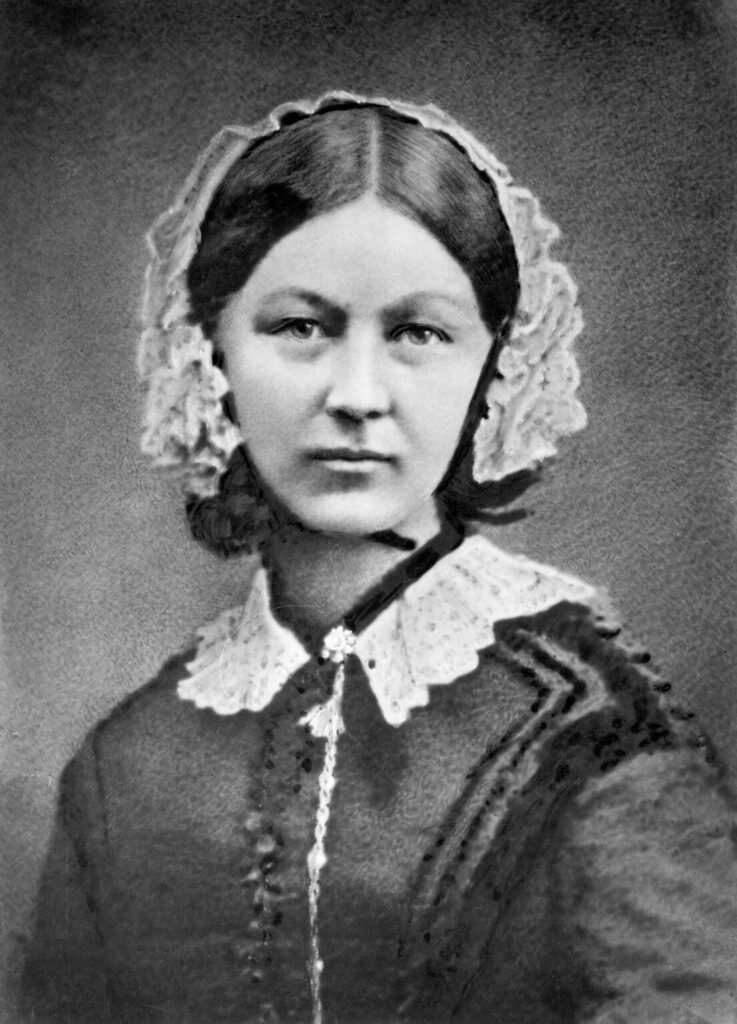
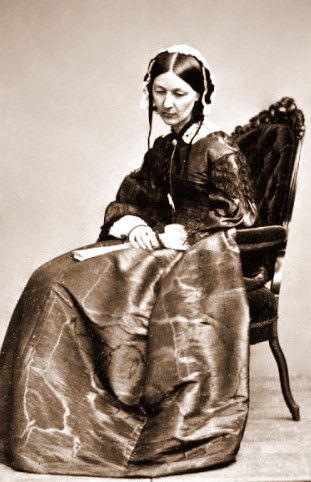
RIGHT: Florence Nightingale portrait by William Edward Kilburn, 1854.
Megan and Florence
Last but not least, and certainly most important, is Megan’s acting of the character.
“Florence was an invalid,” Megan said. She suffered from what some believe to have been chronic fatigue syndrome.
As Florence, Megan immediately adopted a stooped posture. Through her eyes, she conveyed both warmth and weariness. As with her portrayal of Abigail Adams, every shot was a subtly different look, not posed, but rather resonant with emotional truth. Thus, in a short time we had more options than we needed. Sometimes when we get in that state where everything’s working, we keep shooting for a while and enjoy the thrill of capturing the shot we hoped for.
Prior to our session, I had not seen the William Edward Kilburn photograph of Florence Nightingale above. Afterward, I was struck by how Megan revealed Florence’s physicality in her pose. My only direction was—once we discovered it—to keep the diagonal Megan created with her right arm resting on Florence’s book. I like the way Megan’s portrait of Florence appears to be a synthesis of the historical portraits of Florence above.
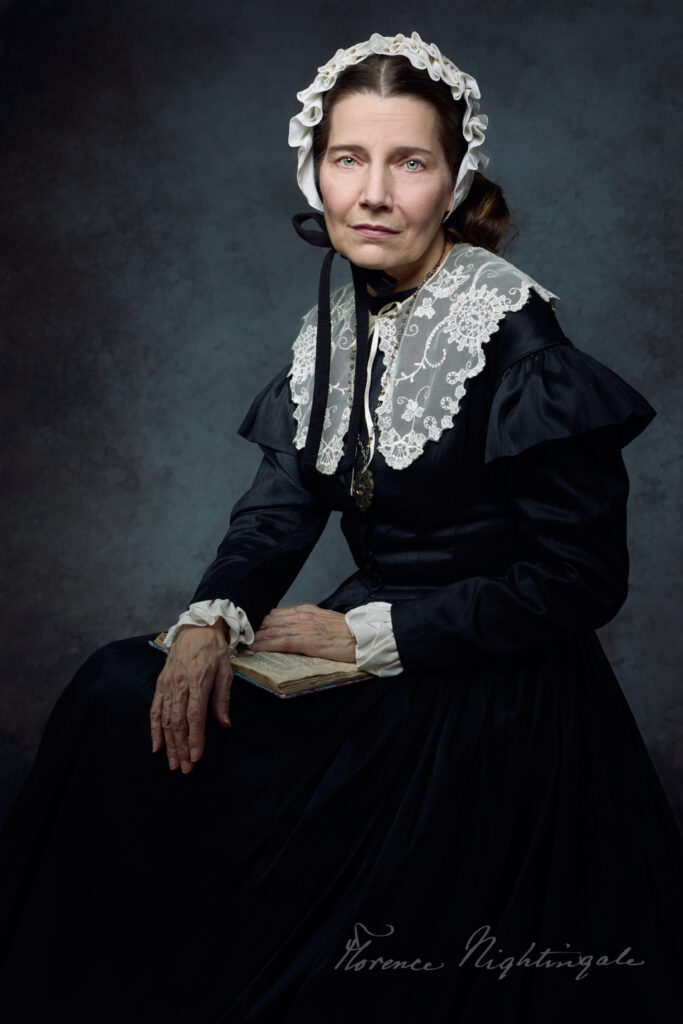
Editing
Even though editing Florence was to be the most straightforward of the portraits from our first session, I still took time revisiting the portrait over a few days. There wasn’t much necessary editing that needed to be done to make Florence into a beautiful portrait, but there were small things we could to do try to make the portrait stronger.
I shifted the background color a little cooler. Florence wears neutral tones of black and white. On a gray background, there were so many neutral colors in the portrait that I thought it could use some additional contrast. In many portraits, skin is a neutral color. In a neutral portrait like this one, the skin’s red/pink hues provide the only color. Shifting the background opposite the skin tone boosts the separation of subject and background and makes Florence stand out. I softened some of that background texture as well, which I thought worked with the new hue. I made six versions of the final portrait with varying shades of gray and blue in the background. Megan’s favorite was the cooler blue, so we settled on that one.
Oftentimes in these portraits, I’ll be happy with them at the end of the day, wake up in the morning, and see them with new eyes. I’ve learned that I need time while working on these, so that I can continue to see them fresh every day.
Time Travel Portraiture
Just for fun, I made a daguerreotype-style version using assets from Spoon Graphics. In the Auxientia Steampunk game daguerreotype-style portraits, I placed the characters’ names in script in the lower right corner of the photograph. I figured I’d do the same for Florence, and Megan loved it so much she asked me to put the signature on the color portrait. I wondered if I could do her one better: a few minutes later, I had Florence Nightingale’s actual signature on both portraits, written in Nightingale’s own hand.

Megan Wells Historical Portraiture Gallery
It is an honor to work with Megan on this project. It’s thrilling to witness her inhabit these characters so completely—in voice, in physicality, in spirit. I’m amazed at how she summons them into the present, as well as how present she is as each character in every frame we photograph.
Here are the two portraits we’ve made thus far in the Megan Wells gallery of historical women: Abigail Adams and Florence Nightingale. I’m excited to add to the gallery as we finish more and more of them.
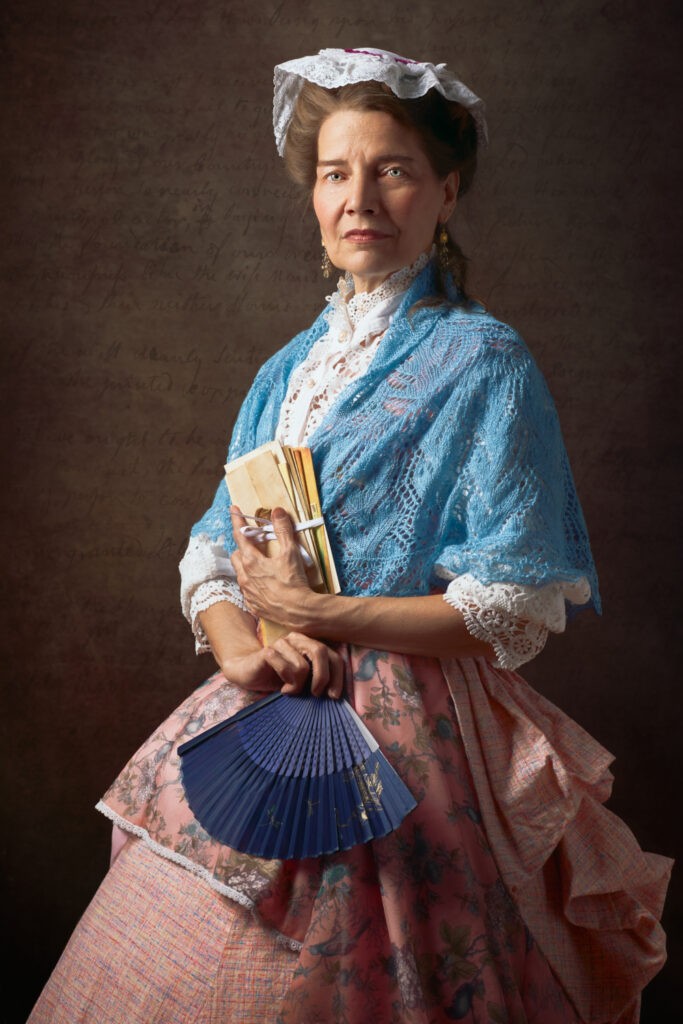



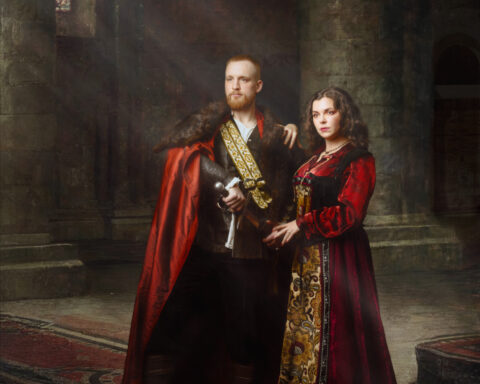

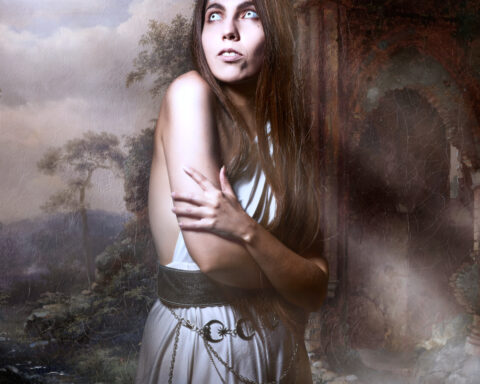

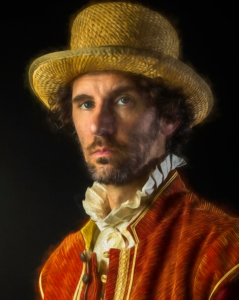

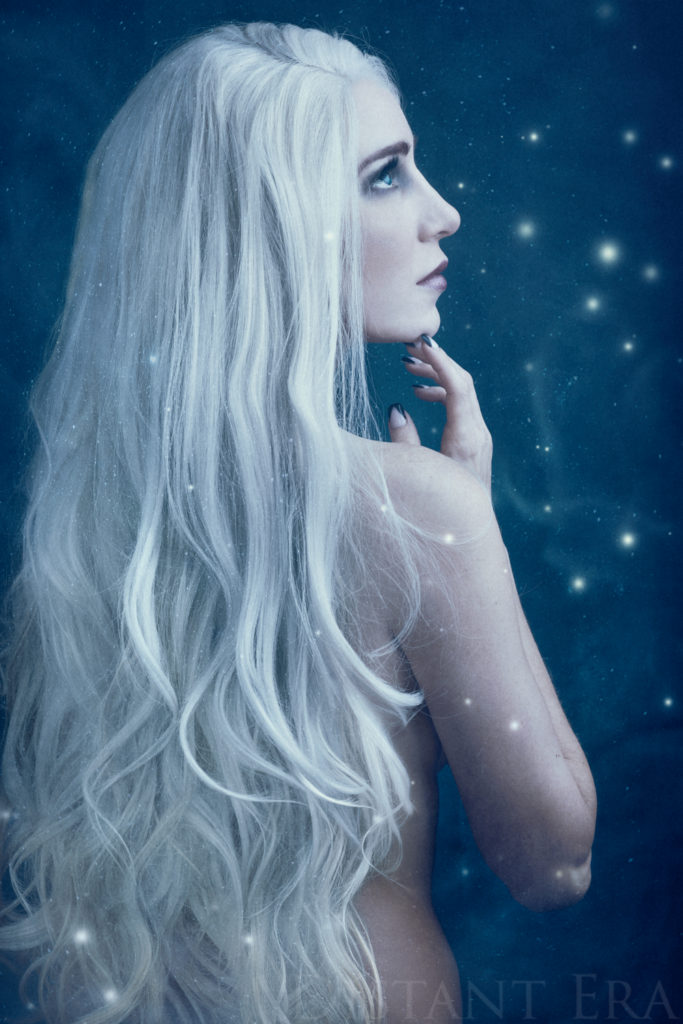
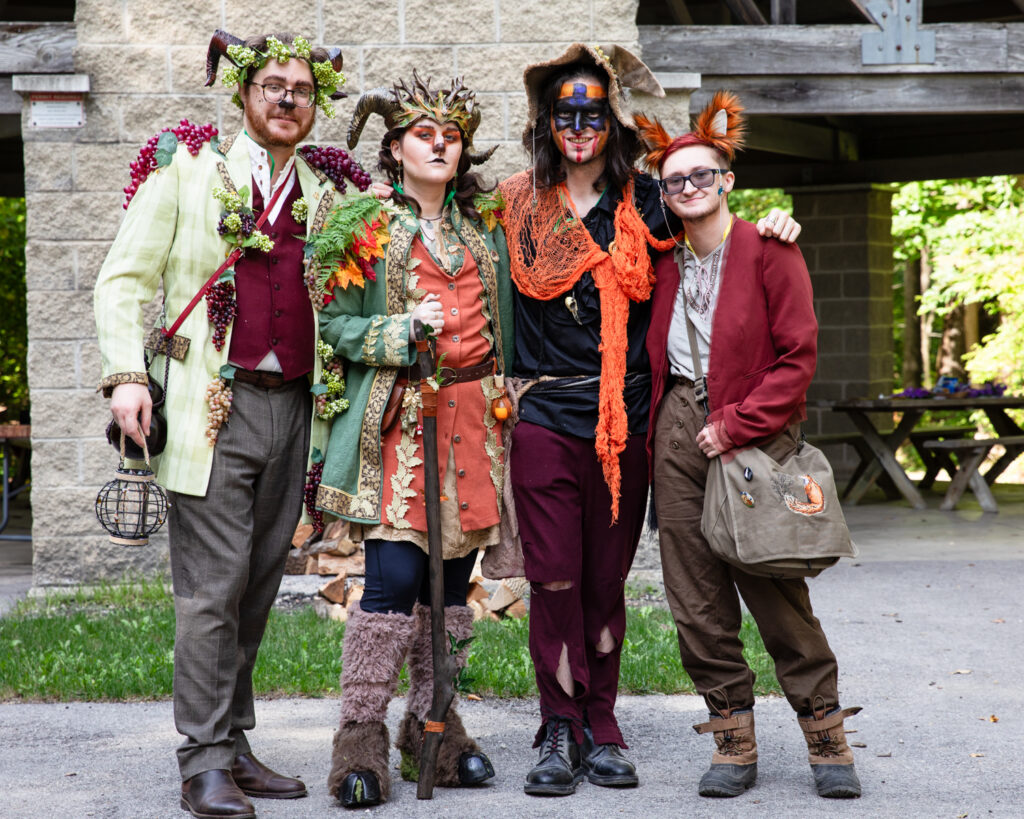
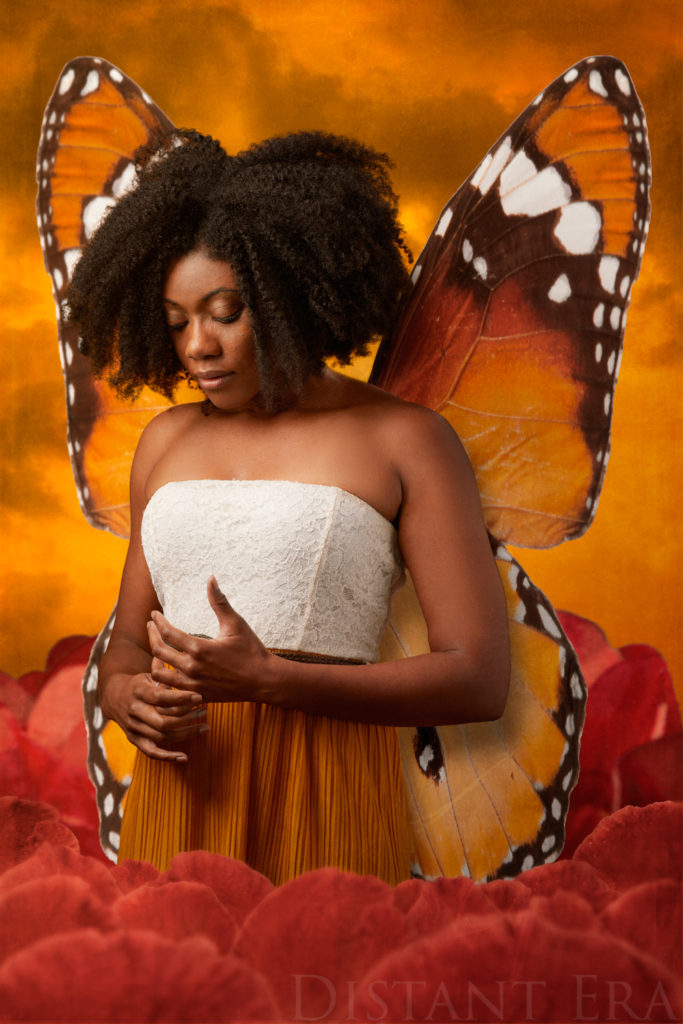
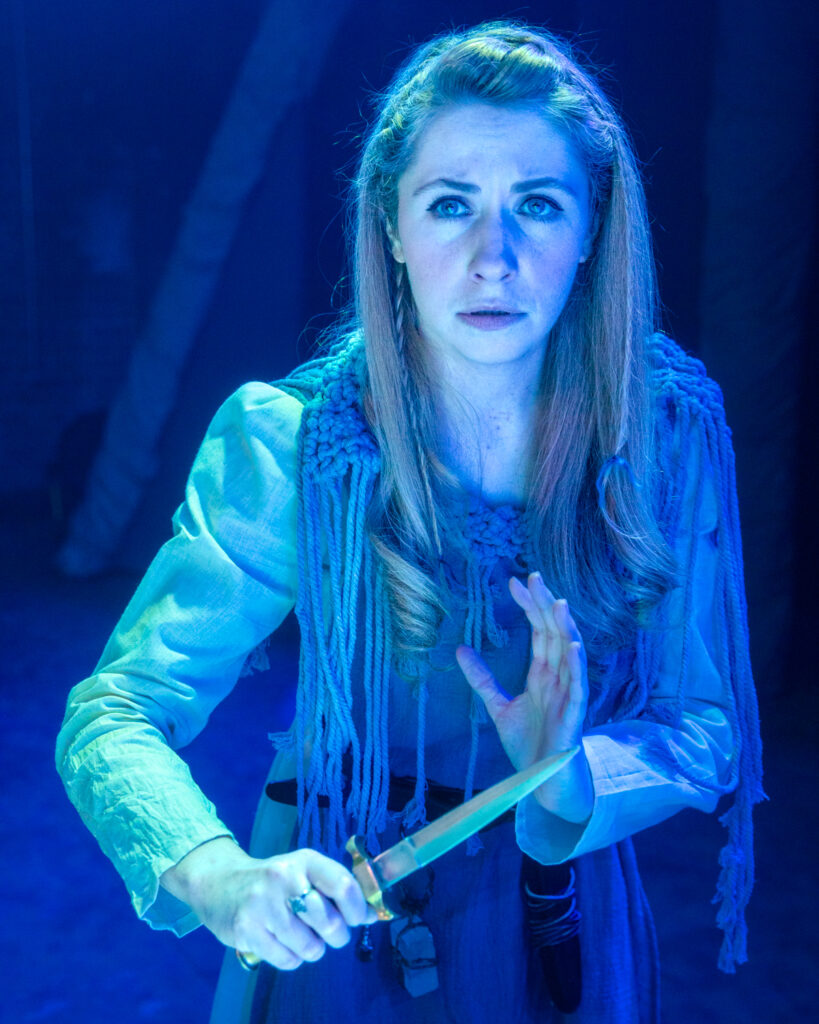
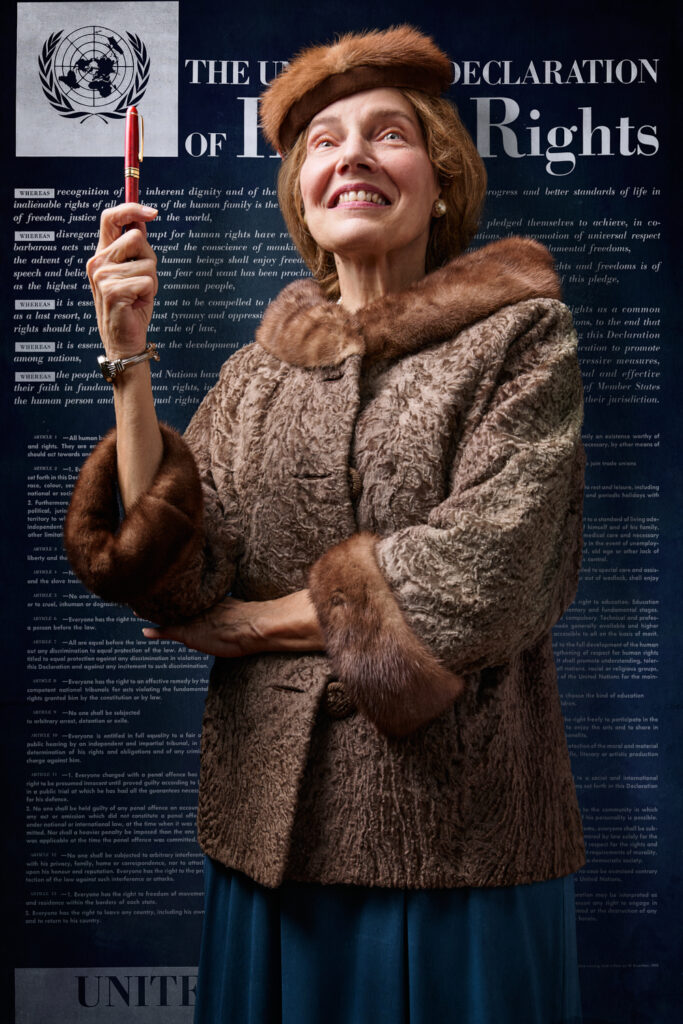
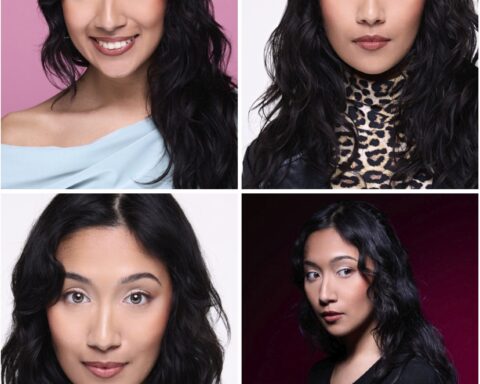
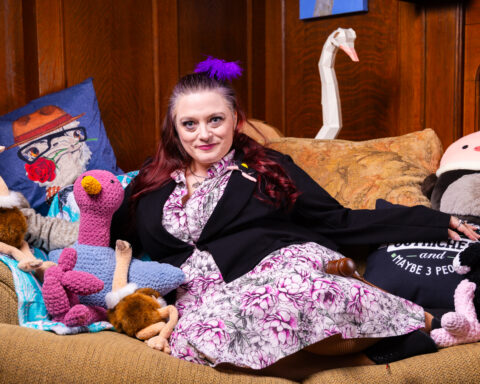


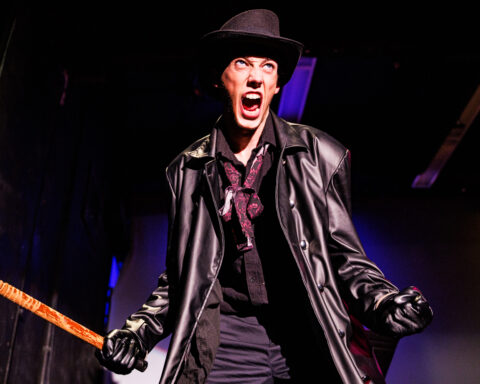
[…] we shared storyteller Megan Wells as Abigail Adams and as Florence Nightingale, the first two in a series of historical women that Megan plays in her professional work. This […]
[…] weeks we’ve presented the first three finished portraits from that session—Abigail Adams, Florence Nightingale, and Eleanor […]